The Fall Grand Finale
The fall fishing season is about more than stripers and blues.
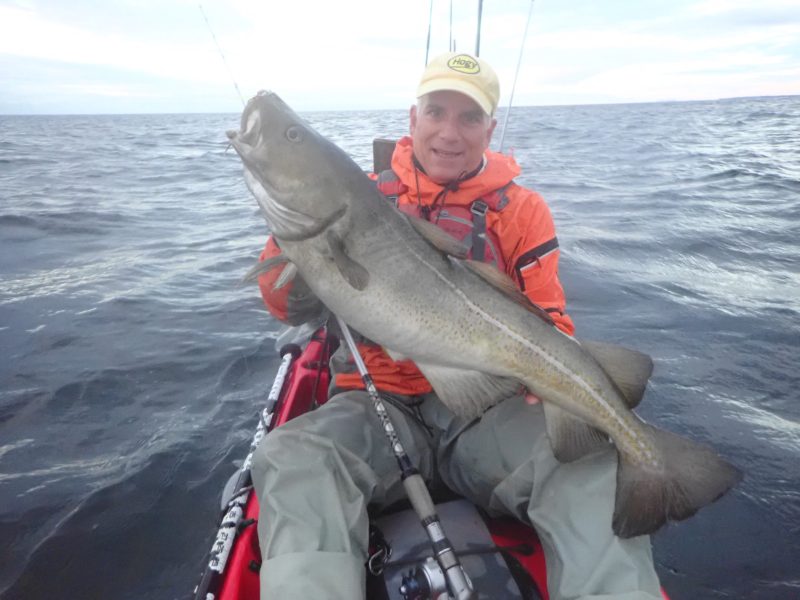
Recently, I was thinking about an article I read a long time ago. It was sometime in the early 70s, when I was a youngster learning to fish in Southern California. Eager for information, I read as many fishing magazines as I could. The article that stuck with me was about which month was the best fishing month of the year, and the author had chosen October.
As a new angler I didn’t really understand the seasonality of fishing so the choice of October was surprising. Every schoolkid knows that the best months for anything are the summer vacation months! The author was persuasive in his argument, though, and reviewed various fisheries across the country that all peaked in October. He provided so many examples of places that it was especially hard for an inexperienced angler to disagree.
Fast-forward about 50 years and I still don’t have the evidence to argue that fall isn’t the best time to fish. The exact timing depends on where in New England you live, but September and October are peak feeding time for many species. I have seen the annual cycle that fish go through, first in California, then again in Massachusetts. In California, the cycle wasn’t as obvious because weather conditions didn’t change much, but serious fishermen knew where and when local populations migrated for spawning and summer feeding. With more consistent water temperature, many fish stayed much longer or arrived much earlier some seasons. In New England, our seasons are more obvious. Spring starts with the post-spawn stripers making their feeding rush along the coast to get to their summer feeding grounds. By September, the action isn’t just about stripers because every species has feedbags on.
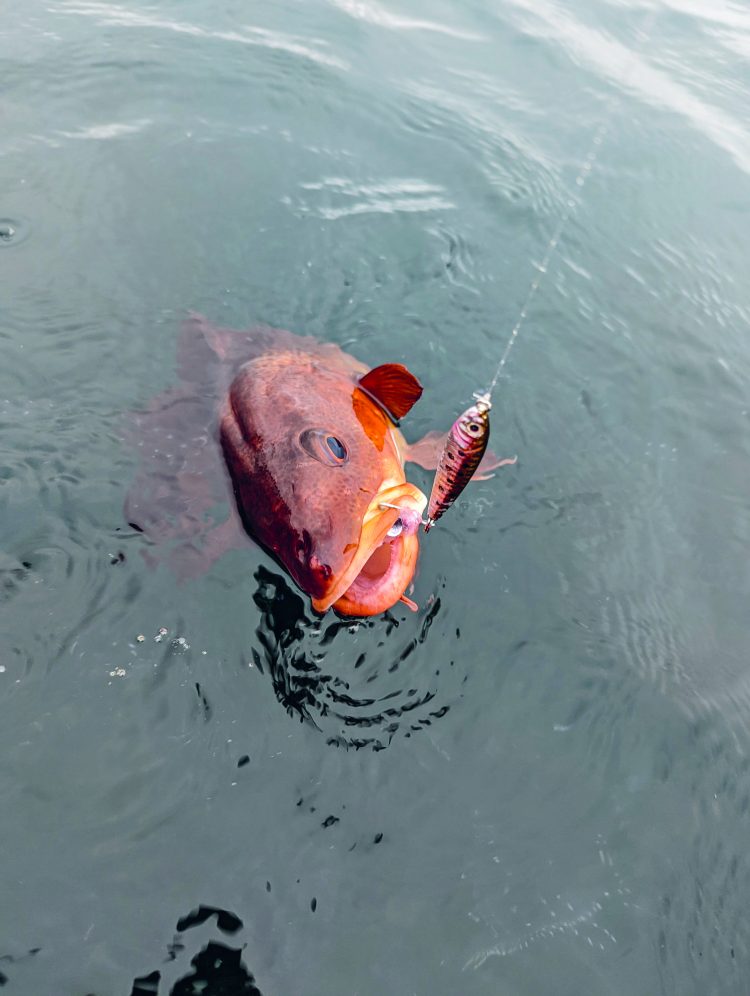
We’re fortunate to live in an area with diverse baitfish since the inshore fishery is driven by massive schools of young-of-the-year fish. Early season in New England is about fish coming inshore to spawn, alewives running up the rivers, Atlantic herring moving inshore, and populations of sand eels, bay anchovies, spearing and bunker surviving through the summer. I’m always surprised at the variety of baitfish that predators spit up in my kayak. The last couple of seasons, I’ve even seen quarter-size butterfish on the North Shore of Boston.
Much of the baitfish here will not winter over in shallow waters; instead, they head south or move off to deeper water. September and October are the transition months for most of them. By early September, estuaries are loaded with bait. Show up at night with a flashlight and you will see thousands of eyes looking back at you. However, colder weather and northeast winds start to drive the baitfish out of the safety of the estuaries and onto the beaches, where albies, bass, and blues are waiting. Big storms will flood the ponds where the herring and alewives spawned in the spring. Many of those ponds had lower water in the summer, which made it difficult for the smaller fish to get back to the ocean, but the increased current will sweep them past the dams back to open water.
The strategy of fall kayak fishing is often simple: look for breaking fish. It isn’t always that easy, but the strategy is to be in the areas most likely to have big schools of bait, places like river mouths, breachways, or beaches. Early morning kayak patrols are most productive, but there are many days when the feeding frenzies are tide-driven and not related to the time of day. Outgoing tides dump bait out from the estuaries, where they create a stream of nutrient-laden water that attracts larger fish.
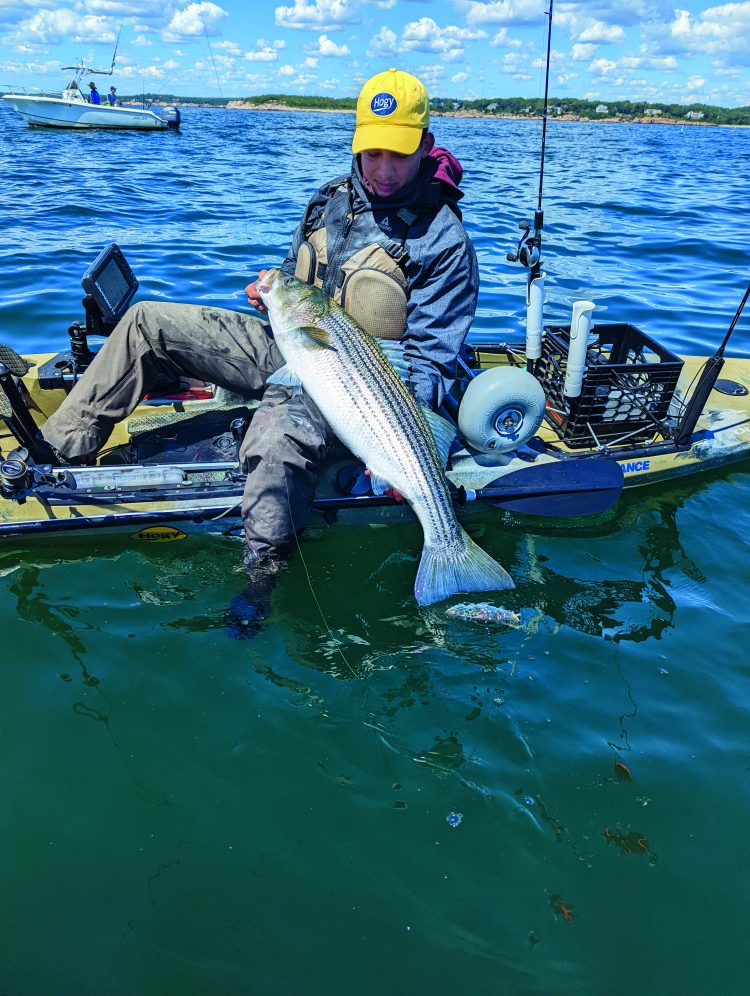
A predawn trip to a breachway on the outgoing tide is a good way to find stripers that may become finicky when the sun is up. Targeting early morning stripers is often a good way to begin an albie trip as the striper bite usually starts to wane just as it gets light enough for the albies to start popping on the schools of baitfish. This summer, we’ve also seen more blues than in recent years, so they should be a viable target on most trips.
Check your state’s regulations for other fish since black sea bass, scup, and fluke are also taking advantage of all the baitfish. I got into some really good inshore fluke feeds last year when the fish were chasing peanut bunker along channels. Every fish I caught was spitting up peanuts and the spit-up bait was sinking back down, chumming up other fluke. Black sea bass often move higher in the water column when there is a lot of bait around, meaning the chance to catch them on faster-moving baits like epoxy jigs or swimmers. Using a diving lure, like Rapala’s deep-diving Husky Jerk. can also be very effective.
If you are in Mass Bay or north, cod are another worthy fall target since September and early October are the open season in most states. Fall is the best time for inshore cod—with all the bait around, they can be found in only 30 feet of water at times. Cod will eat almost anything, so the fall months are their smorgasbord. Plastics fished right on the bottom will locate fish that are eating crabs and lobsters.
Metals jigged just off the bottom will target the cod chasing schools of baitfish. I often look for fish around large schools of tiny pollock. Even when I’m not marking cod on the fishfinder, I sometimes catch fish near the schools.
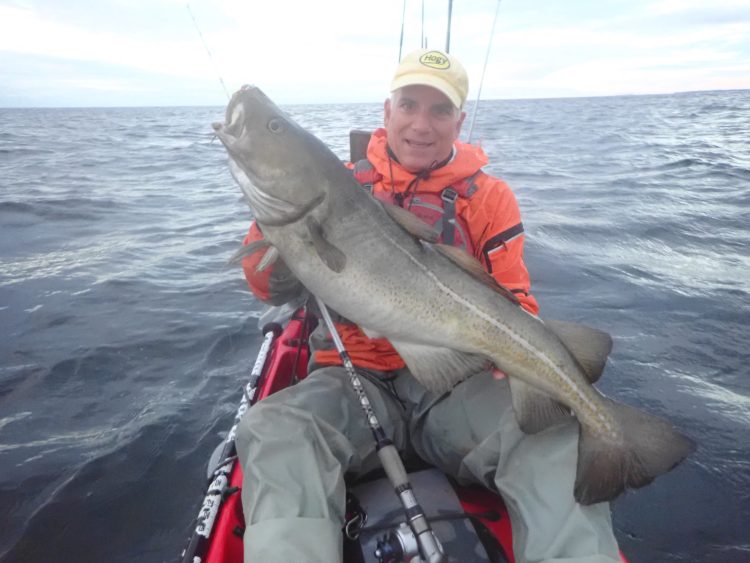
Of course, the wild card for this time of year is the hurricane season. Offshore hurricanes make our inshore waters more than a little bumpy and tropical storms can cost us fishing days. On days that are unfishable in the salt, consider giving your kayak a freshwater rinse. Lakes, rivers, and ponds are also going through the young-of-the-year frenzy as larger predators fatten up for winter. In many waters, weedbeds have died off as the water chills, so big plugs or stickbaits worked over the remaining weeds can be really effective for bass and pickerel. This is also my favorite time to target crappies. I fish small plastics and use tactics similar to striper fishing—it is really fun and a good way to keep your plastics game up.
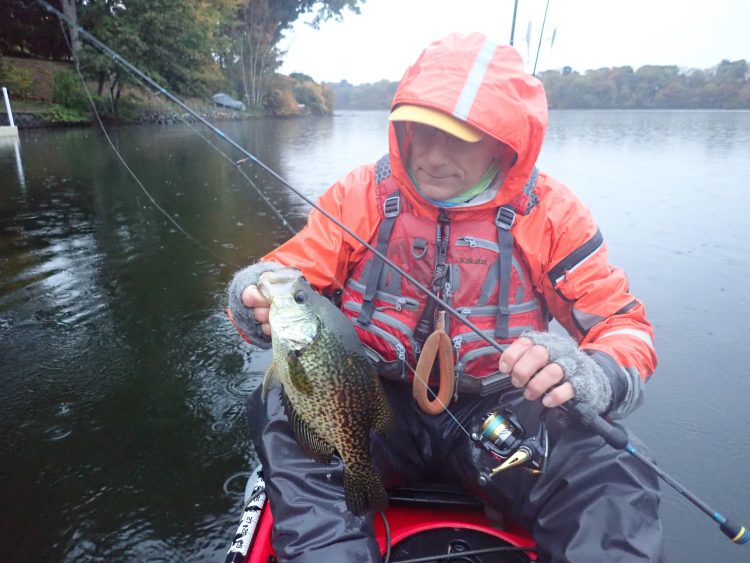
Lure selection in the fall is often the ticket to success. Skilled albie fishermen notice what bait the fish are keyed on and use a lure to match it, though sometimes dropping to a slightly smaller lure makes all the difference. The same is true for all the other species. The goal is to pick a lure that matches the hatch or one that differentiates itself from the school. Going big may get bites on one outing; other times, the fish want only what they’re eating.
Two months of peak fishing are on us, but it is the grand finale of the season. At the beginning of September, the weather is warm and everything is on the feed. By the end of October, all those cold nights have sent many fish south. Keep the kayak on the roof of your car and get on the water. After October, there won’t be too many days when the weather or the fish are as welcoming to kayakers.
Related Content
1 thought on “The Fall Grand Finale”
-
Roman Any time you can get out is a good time!!
Leave a Reply